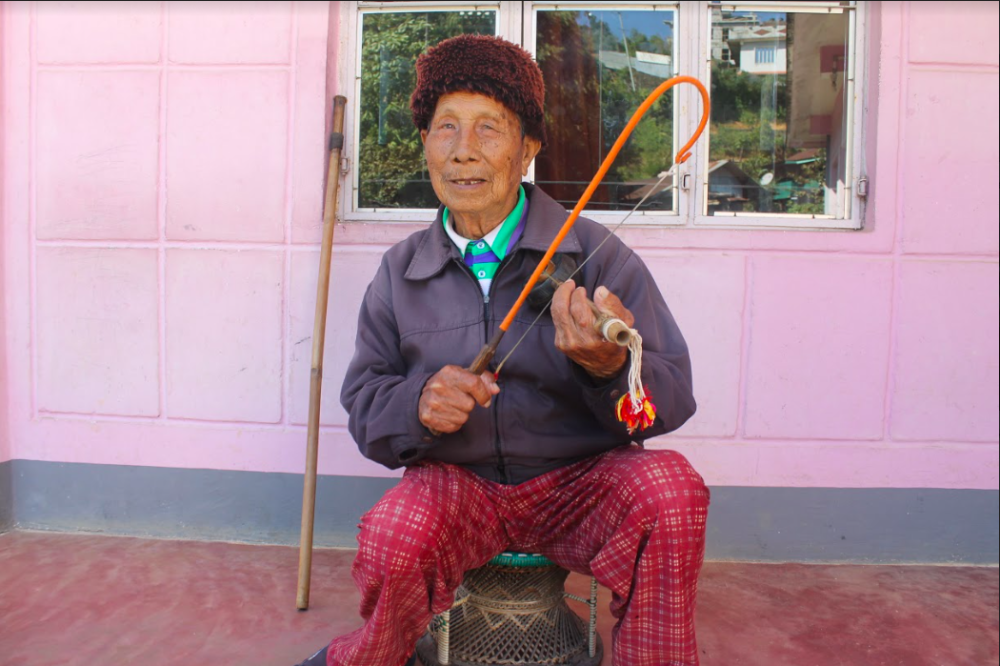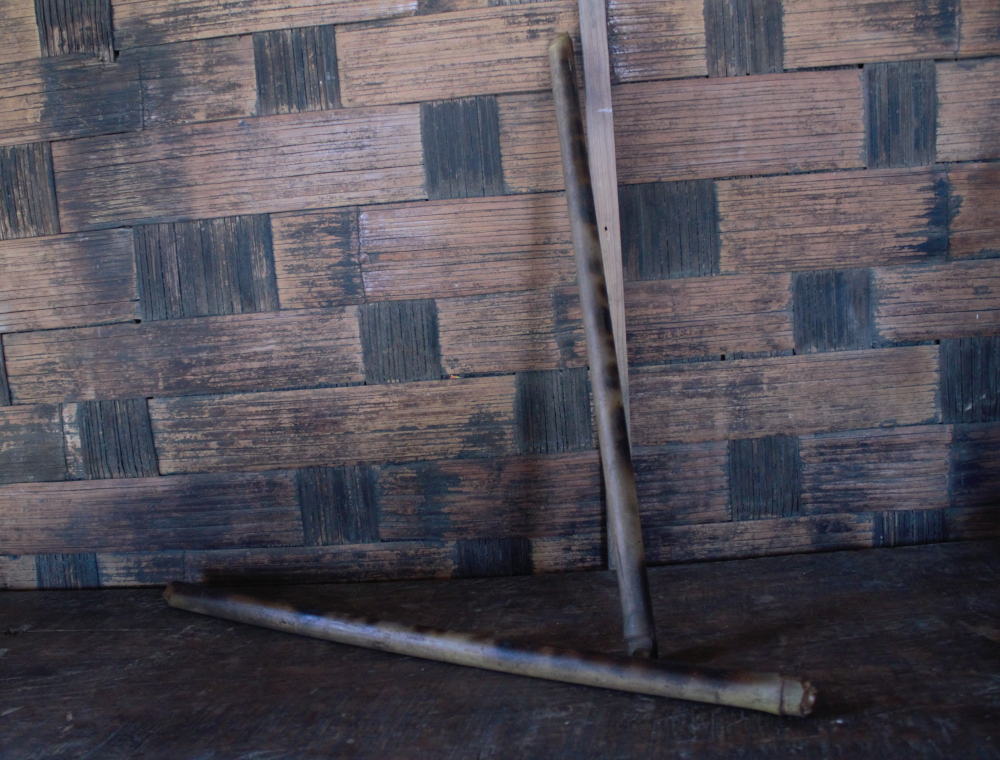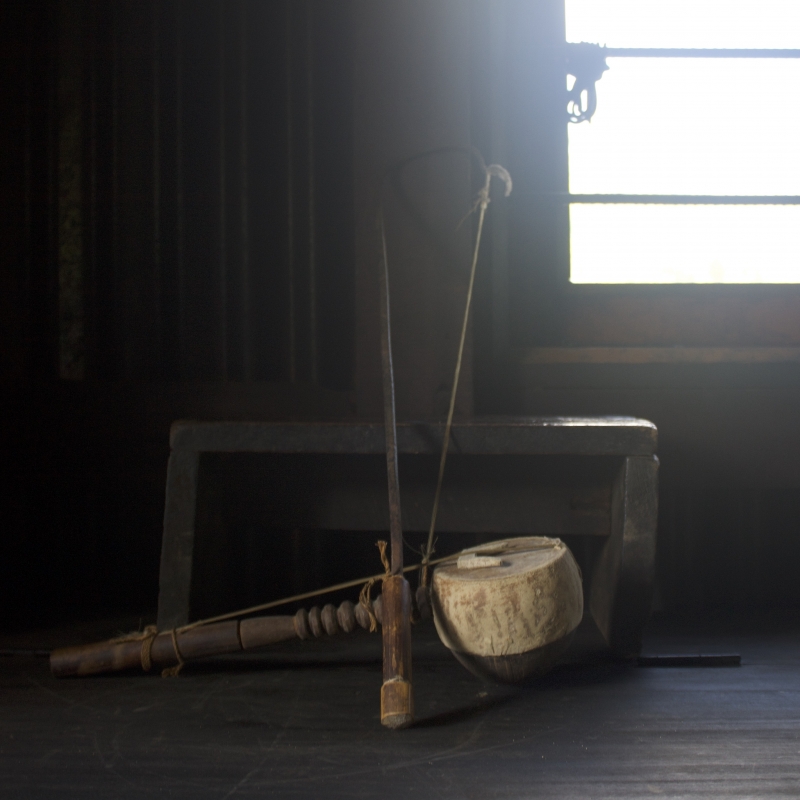Most traditional cultures and their folk music have a variety of accompanying musical instruments. The form, melody and function are indicative of that culture's technical and geographical ingenuity.
The Ruangmei Naga people are one of several tribes of the Naga people that inhabit Northeast India. They are predominantly located in Tamenglong and Noney districts of Manipur and have a rich tradition of folk music that encompasses wide themes surrounding their social and cultural lives. There are songs that deal with agricultural operations like lau phun lu (seed sowing song) and lau ruaih lu (weeding song), ritualistic songs like baanruh lu (feast of merit song), and stories and rhymes that are sung to children and are called nah lu (children’s song). Although many folk songs were also sung without musical instruments, some such as majian lu (lamentation song), nrah lu (harp song), and lamluan lu (love song) always needed drums and harps. In the simplest sense, these musical instruments are meant not just to generate sound but to produce and modify the character of folk music altogether. It is therefore useful to look at a classification of musical instruments that accompany Ruangmei folk music and songs based on the way in which the sounds are generated and produced. One such classification is the Hornbostel-Sachs system where musical instruments are classified into the categories of aerophones (instruments where sound is generated through vibrations through air and not strings or membranes), chordophones (instruments where sound is generated through vibration of strings stretched between two fixed points), idiophones (instruments where sound is generated by the vibration of the instruments themselves rather than a string, membrane, or a column of air), membranophones (instruments where sound is produced by the vibration of a tightly stretched membrane) and electrophones (instruments that produce sounds through electrical means).
Nrah
Nrah is a stringed instrument, a chordophone, used by the Ruangmei people, akin to a violin.[1] It has a hollow body made out of a coconut shell that has been cleaned and cut in half and covered with animal skin, preferably that of a buffalo. The strings for the main body and the iron bow are made from horse’s tail. The main body and its horsehair string are bowed and not plucked to generate sounds. The nrah has a separate removable component, a bridge made of wood to raise and support the strings to generate music. (Figs 1 and 2)


Nrah was mostly played by the Ruangmei men, women rarely played it although not because they were forbidden from playing. Nrah has an almost melancholic yet peaceful sound and was a part of various moods and occasions from serenading the beloved to an accompaniment for songs about love, loss and death. However, nowadays nrah is restricted to special occasions and is seldom used in community singing.
Nkhuangh
Nkhuangh (drum) is the main percussion instrument classified as a membranophone, and is used during folk songs or ceremonies where the nkhuangh player plays it by beating the membrane with a stick.[2] It is the main accompanying bass and percussion instrument for folk songs and is mostly played in a straightforward 4/4 beat. The membrane of the drum is made from animal skin, especially that of the buffalo. Traditionally, nkhuangh was used during festivals and accompanied dances that were an integral part of Ruangmei celebrations. It is still a part of musical ceremonies and church festivals during Christmas. (Fig. 3, 4, 5 and 6)




Syamtuaic
Syamtuaic (clash cymbal), an idiophonic instrument, is used during folk songs and celebrations. A pair of identical cymbals, syamtuaic is believed to have entered the Ruangmei Naga folk consciousness through external influences, especially the Kuki people.
Syanmiw
Syanmiw (nipple gong) is also an idiophonic instrument and is traditionally used during special occasions such as marriage, funeral and baanruh (feast of merit) to signal the start of an event. Back in the day, along with the guaichai (bullhorn), syanmiw may also have even been used to alert against hostile attacks from neighbouring villages. (Fig. 7)

Alim
Alim (flute), an aerophone, is the main woodwind instrument of the Ruangmei people. An aerophone is an instrument in which sound is generated by vibrating air. Alim was mostly played by men of the society and was traditionally played at night before sleep. It is made from a bamboo stick and usually has four to six holes. It has an airy and mellow sound. (Fig. 8)

Each different from the other in their making as well as use, the Ruangmei musical instruments have historically been a part of the folk music of the community. These instruments complement folk songs and dance, and are particularly important because their constructions exhibit the ingenuity of the Ruangmeis who made the most out of available natural resources.
Bibliography
Soundcloud.com. ‘Nrah.’ Accessed October 8, 2020. https://soundcloud.com/user-863073039/nrah/s-Trn3STnKCeQ.
———. ‘Nrah 1.’ Accessed October 8, 2020. https://soundcloud.com/user-863073039/nrah-1/s-GVTkys4Z4uu.
———. ‘Nkhuang.’ Accessed October 8, 2020. https://soundcloud.com/user-863073039/nkhuang/s-WpQMRJoq5W4.












